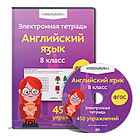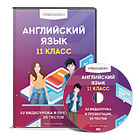Целями данного урока является:
Ознакомление с Рождественскими традициями и обычаями Великобритании и сравнение их с Российскими традициями и обычаями.
Закрепление ранее изученного грамматического материала The Present Perfect Tense.
Проверка навыков разговорной речи, умение понимать речь на слух и выразить свое отношение к услышанному.
Урок проходит в соревновательной и игровой форме, команда- победительница награждается призом, команды-участницы также получают рождественские подарки.
CHRISTMAS
TRADITIONS AND CUSTOMS.
Christmas is а Christian holiday. It is the birthday of Jesus Christ.
In our country it is on the 7th of January. In the Roman Church it is on the 25th of December. To people all over the world it is а time to get together with all relatives and friends and to get and give presents.
Some families open their presents on Christmas Eve, December 24th, give Christmas Resolutions, sing Christmas carols and songs, play games. Some people go to their church for Christmas service. Many families with children leave Christmas cookies, wassail (святочное хождение из дома в дом с пением рождественских гимнов) or eggnog (яичный желток, растертый с сахаром, с добавлением сливок молока или спиртного напитка), and perhaps a carrot or two by the fireplace. Little children go to bed and dream of what presents they'll find under the tree when they wake up. Most children believe that а magical person Santa Claus will visit them. "He is а cheerful old man with а beard that's long and a white, cherry nose, а cap on head and а suit that's red." He comes down the chimney and leaves presents for the family.
There are а lot of Christmas customs and traditions in Britain. One of them is to hang stockings on the mantel to be filled with presents.
The next one is the Christmas Tree which is decorated with coloured glass balls and toys, sweets, bells. There is usually а bright star or the figure of the Christmas angel at the top of the tree.
Decorating the house with "boughs of holly" (сук, ветка, падуб) is an old British custom. It is а bush with red berries and glossy leaves.
Mistletoe is another Christmas symbol. It is tied with ribbons and hung up in doorways. By custom anyone standing under the mistletoe gets to be kissed.
In front of most churches the Jesus' place of birth is usually represented. Here we can see Joseph, Mary, stable animals - sheep, cows, goats, shepherds, angels, the wise men, and of course, the baby Jesus asleep in his manger (Eight reindeer - their names: Dasher, Dancer, Prancer, Vixen, Comet, Cupid, Donder, Blitzen.)
Plan.
1. Music "Silent Night".
2. Introductory talk:
T.: Today we're having not a usual lesson. It's a holiday today. Don't you know what holiday it is?
P': It's Christmas.
T.: Thank you. You are absolutely right. Every year in December people of all Christian World celebrate the birthday of Jesus Christ - that's why we call this time Christmas. It is a magical season when families and friends get together to share the customs and traditions which have been around for centuries. A little later we’ll talk about the most important customs and traditions of the holiday, but first let's try to understand what's the origin of this holiday, when and where it was born.

3. Questions:
You know that this holiday appeared many centuries ago.
Can you tell me who was Jesus' mother? (Mary)
Who was his father? (Joseph)
What city was he born in? (Bethlehem)
Where was he born? (In the stable, in the manger)
4. T.: I am very pleased that you remember these names. I have one more question to you. People in Europe celebrate this holiday on the 25th of December, but when do we celebrate Christmas in Russia? (on the 7th of January).
5. That's all right. We celebrate it on January, 7. Every country has its own customs and traditions and today let's talk a little about British ways of celebrating Christmas.
T.: Christmas has been celebrated in England for thousands of years. According to the legend, King Arthur started it in the city of York in 571. People
nowadays start preparing for the holiday in the beginning of December. People buy lots of presents and send cards to their friends and relatives. It is mostly a family holiday. Englishmen decorate their houses with green leaves, paper decorations, Christmas Trees and colourful electric lights and glass toy s, balls and beds.
Holly and mistletoe are the plants symbolizing Christmas. Red and green are the traditional colours of Christmas. Green represents the continuance of life through the winter. Red symbolizes the blood of Jesus at his Crusifixion. But the main symbol of Christmas is the Christmas Tree.
The first Christmas Tree came to England in 1841. Queen Victoria's husband Prince Albert brought it over from Germany.
Nowadays, in London, near the statue of Lord Nelson in Trafalgar Square, a giant Christmas Tree is set up and decorated each year. The Tree is a present from the people in Oslo, Norway.
6. T.: - What do people usually do on Christmas?
P1, P2, P3: - They buy presents, decorate the trees, make holiday dinner, sing Christmas songs, go to church, play games. T.: What do children usually do on Christmas?
Ps: They hang stockings, wait for presents, play games, eat a lot of tasty things, etc
T.: Whom do children wait for on Christmas Eve?
Ps: Santa Claus.
7. Now the students recite poems about this magic person. My pupils recite poems.
The pupils recite poems, which were given to them at the previous lessons. (the poems are at the beginning of the plan) (Приложение 1)
8. Games.
Т.: ОК. This is Santa Claus. Let's describe him. What does he look like? What does he wear? What has he got in his hands?
Ps: - а man with... (a cherry nose)
Весь материал - в документе.

 Получите свидетельство
Получите свидетельство Вход
Вход












 Разработка урока по английскому языку "Рождественские традиции и обычаи" (64.5 КB)
Разработка урока по английскому языку "Рождественские традиции и обычаи" (64.5 КB)
 0
0 407
407 49
49 Нравится
0
Нравится
0


